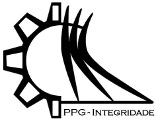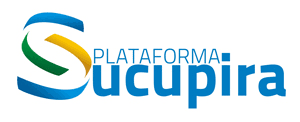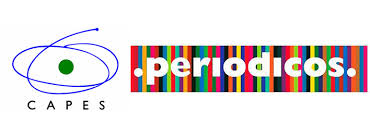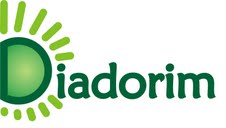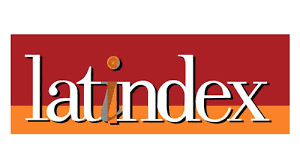UM MODELO DE CONTATO SÓLIDO-SÓLIDO PARA O MÉTODO DE PARTÍCULAS MOVING PARTICLE SIMULATION
DOI:
https://doi.org/10.26512/ripe.v2i35.21430Keywords:
Interação entre sólidos. Sólido livre. Moving Particle Simulation. Método de partículas. Carregamento.Abstract
Problemas de interação fluído-estrutura com presença de superfície livre e sólidos livres para deslocar são fenômenos hidrodinâmicos altamente não lineares e de elevada complexidade, que trazem grandes desafios para a modelagem e simulação computacional. Nos casos de contato ou colisão entre sólidos, normalmente é necessário realizar algum tratamento específico para impedir a penetração entre corpos. Nesse contexto, o objetivo deste trabalho é contribuir para o desenvolvimento de uma técnica de simulação dos fenômenos hidráulicos e costeiros que envolvem a interação entre fluídos e sólidos apresentando um modelo de contato sólido-sólido para o método Moving Particle Simulation (MPS). O MPS é um método baseado na discretização do domínio em partículas, sem utilização de malha, e capaz de modelar geometrias complexas com grandes deslocamentos e deformação, incluindo superfícies livres com fragmentação e junção de fluídos e presença de multicorpos. O modelo de contato sólido-sólido proposto visa estender as funcionalidades do MPS, simplificando forças interfaciais por meio de um sistema massa-mola-amortecedor, de forma a reproduzir as propriedades macroscópicas da interação entre multicorpos. Comparações entre resultados numéricos e analíticos são realizados para calibração de constantes do modelo. O modelo é aplicado para um caso de carregamento de sólido livre em escoamento com superfície livre, e comparado com resultados numéricos e experimentais.
References
Amicarelli, A., Albano, R., Mirauda, D., Agate, G., Sole, A. & Guandalini, R. A., 2015. Smoothed Particle Hydrodynamics model for 3D solid body transport in free surface flows. Computer & Fluids, vol. 116, n. 205, pp. 205-228.
Chorin, A. J., 1967. The numerical solution of the Navier-Stokes equations for an incompressible fluid. Bulletin of the American Mathematical Society, vol. 73, n. 6, pp. 928-931.
Gingold, R. A. & Monaghan, J. J., 1977. Smoothed particle hydrodynamics: theory and application to non-spherical stars. Monthly Notices of the Royal Astronomical Society, vol. 181, pp. 375-389.
Harada, T., Tanaka, M., Koshizuka, S. & Kawaguchi, Y., 2007. Real-time Coupling of Fluids and Rigid Bodies. APCOM ’07 in conjunction with EPMESC XI.
Harlow, F. H., 1964. The particle-in-cell computing method for fluid dynamics. Methods in Computational Physics, vol. 3, pp. 319-343.
Idelsohn, S. R., Õnate, E & Del Pin, F., 2004. The particle finite element method: a powerful tool to solve incompressible flows with free-surfaces and breaking waves. International Journal for Numerical Methods in Engineering, vol. 61, n. 7, pp. 964-989.
Koshizuka, S. & Oka, Y., 1996. Moving-Particle Semi-Implicit Method for fragmentation of incompressible fluid. Nuclear Science and Engineering, vol. 123, pp. 421-434.
Lee, B.-H., Park, J.-C., Kim, M.H., Hwang, S-C., 2011. Step-by-step improvement of MPS method in simulating violent free-surface motions and impact-loads. Computer Methods in Applied Mechanics and Engineering, vol. 200, n. 9-12, pp. 1113-1125.
Lucy, L., 1977. A numerical approach to the testing of the fission hypothesis. Astronomical Journal, vol. 82, pp. 1013-1024.
Ren, B., Jin, Z., Gao, R., Wang, Y.-X. & Xu, Z.-L., 2014. SPH”“DEM modeling of the hydraulic stability of 2D blocks on a slope. Journal of Waterway, Port, Coastal and Ocean Engineering, vol. 140, n. 6.
Sulsky, D., Chen, Z. & Schreyer, H. L., 1994. A Particle method for history-dependent materials. Computer Methods in Applied Mechanics and Engineering, vol. 118, n.1, pp. 179-196.
Downloads
Published
Issue
Section
License
Given the public access policy of the journal, the use of the published texts is free, with the obligation of recognizing the original authorship and the first publication in this journal. The authors of the published contributions are entirely and exclusively responsible for their contents.
1. The authors authorize the publication of the article in this journal.
2. The authors guarantee that the contribution is original, and take full responsibility for its content in case of impugnation by third parties.
3. The authors guarantee that the contribution is not under evaluation in another journal.
4. The authors keep the copyright and convey to the journal the right of first publication, the work being licensed under a Creative Commons Attribution License-BY.
5. The authors are allowed and stimulated to publicize and distribute their work on-line after the publication in the journal.
6. The authors of the approved works authorize the journal to distribute their content, after publication, for reproduction in content indexes, virtual libraries and similars.
7. The editors reserve the right to make adjustments to the text and to adequate the article to the editorial rules of the journal.


